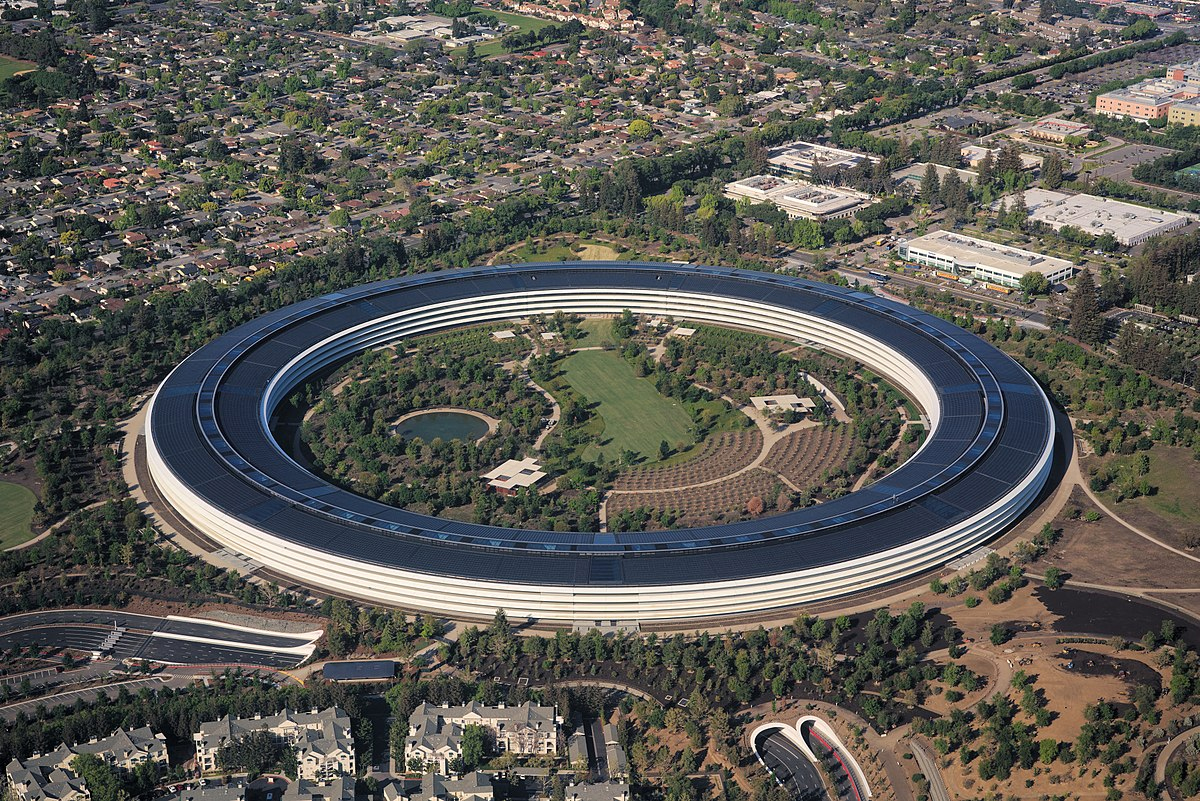
The construction of Amazon’s new headquarters is an idea. The company is known for its savings wherever possible. She is ready to fight Congress for every dollar in the warehouse. It implements robots and AI, designs new logistics systems, invests billions in the construction of warehouses, so that each of them works at least a little more efficiently. And at the same time, its entire headquarters is more like an arboretum. Each floor is filled with trees, ferns and vines. They are much more here than people.
A lot of space, about a quarter of the building, is reserved for greenery. Although it could be workplaces or meeting rooms. Where did Bezos have such an unusual waste of money?
Unless, if the abundance of greenery in the office - this is the savings ...

Stress? Procrastination? Need more energy? The cure for these diseases can be nature. Fresh air, water and plants make us happier and more productive. At least that's what Microsoft, Amazon, LL Bean and other major companies think. To make their employees more creative, healthier, work with great enthusiasm and not run to competitors, they arrange corners of the forest in their offices. Very big money is invested in such architectural solutions. Amazon, for example, will spend $ 5 billion on the construction of its new headquarters.
What is the difference for Bezos? Why do his huge warehouses look like a cage for a hamster, where the entertainment is just running around the wheel, and the offices look like arboretums? Obviously: the difference in employees.
Headquarters will mainly be managers and IT. People who need creativity and an active brain. And purely mechanical classes in warehouses can be obtained by robot people who perform the same task a thousand times every day. Anyway, in the future, robots will replace them.
Evidence base
But is it true that nature at work can make us happier and more productive? Researchers say yes.
In his book The Nature Fix, author Florence Williams, for example, talks about how such “green” spaces, even if they are completely artificial, allow people to recover more quickly psychologically. Based on biology, psychology and medicine, she explains how it relieves stress, makes us more sensitive, calm and prone to interacting with the world and with each other.

Author Ingrid Fetel Lee spent ten years searching for how ephemeral “happiness” can manifest itself in the physical world. In her TED story, she explains that her main discovery during this time was that in all conditions and in all cultures, nature helped people to feel more fully. And from contact with her it became easier not only for office workers mired in routine, but also for Eskimos or wild tribes of the tropics.
In the Blue Mind book, Dr. Wallace Nichols describes the presence of water as one of the factors in our well-being. His book describes how proximity to water (sea, lake, river) makes people more productive intellectually, and improves the quality of their work.
Highly competitive IT structures can exploit this. The most successful companies today care about the well-being of their employees. It began with the introduction of a free daily routine. Additions of rooms with games, fitness center, pool. Now Google, Zappos, Cisco and others allow their IT people to sleep at work, and even create conditions for this, realizing that a short day's sleep not only does not harm, but also helps productivity (and also reduces the risk of cardiovascular disease).
The next stage is a green corner or even a whole park near the office. If the office is in the city center and there is no free space around, the park is created on the roof or directly inside.
Three factors
The presence of nature is good for people - and therefore, accordingly, good for business. There are at least three reasons for this:
- Reducing the number of sick leave . According to a study by the University of Oregon, the more diverse the environment around us, the more plants and nature in it, the better on average people have memory and the ability to focus on the task, and the less we feel burnout (the concept is called “biophilia”). Providing employees with views of trees and landscapes reduces the number of sick leave at the office staff. Those with windows looking only at roads and buildings (or had no windows at all) took on average 6.5% more sick leave than those who could look at lawns and trees. On a large company scale with thousands of employees, the percentage is very substantial. Consider that they do not work 2.5 hours out of 40 per week. Explains why the new headquarters of Bezos is almost entirely composed of windows.
- Increase productivity . Employees are 15% more productive if they have the opportunity to be distracted by greenery. This shows a study conducted in the offices of Britain and the Netherlands. Simply bring a plant to the office, and such an effect is already beginning to show itself. If your room is empty in this regard, there is reason to think.
- Stress reduction . Employee stress costs businesses $ 190 billion in the US alone. Its decline is one of the priorities. Contemplation of nature alone already helps with this (we checked that even in the picture). And if you add a full range of impressions (the sound of bubbling water, the smell of the forest), blood pressure and heart rate are significantly reduced .

Apple Headquarters in Cupertino, Apple Park
Companies that need creative, cheerful and calm employees who do not experience unnecessary stress and are not inclined to make a critical mistake invest in greenery in their offices and gain a competitive advantage.
A couple of examples
Last summer, LL Bean, one of the largest US retailers involved in the sale of warm clothing and shoes, launched the "first outdoor coworking." Such premises appeared in parks across the country - some with roofs, some even without them. Inside you can find tables for laptops, sockets, chairs. According to them, work in such conditions "leads to an increase in creativity, productivity and pleasure."

One of LL Bean coworking in Freeport, Maine
They even created a magazine explaining the idea to the public (here it is online ). According to them, 86% of people would prefer to work in nature, but 88% in the United States get out less than an hour a day. If a person spends at least a couple of hours a week in such a coworking, according to them, it will already be of great benefit, charging for the brain. Especially useful such premises, as planned, should be for meetings, brainstorming and interviews.
Microsoft went even further. The company is building tree houses on its campus. Some are very small, for a couple of people, others are quite spacious, about ten people, so that you can discuss group projects. Everything is made of wood, and the employee himself is at an altitude of five to ten meters, among the dense foliage. The rest of the campus also looks like a park, with Wi-Fi throughout, which allows local IT people to find any convenient place for themselves, even on a bench, even on a lawn. The company says it enhances the creativity of employees, and makes them more energetic.


Amazon has a new headquarters in Seattle, right in the center of the city, and the park cannot be made here. Therefore, they have an arboretum with huge glass balls. More than 40,000 plants from 50 countries were brought here. Inside there are hedges, waterfalls and full 20-meter trees.
The goal is stated, in fact, the same as that of Microsoft. Help workers reach their potential, inspire innovation. The project spent $ 4 billion, but Amazon's IT staff in Seattle totaled about 40 thousand. On average, they get about $ 80 thousand a year. If each of them works 15% more efficiently and starts taking 6.5% fewer sick days, in the future the investment will pay off in seven to eight years.
And for you, at work, is this a factor in general? Or is salary the main thing from the employer?
How many Russian companies spend money on such "excesses"?
